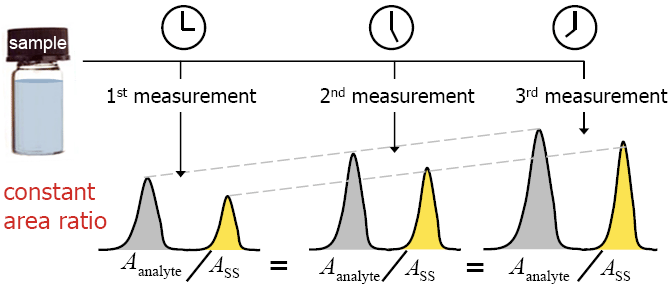Signal drift and IS calibration
signal drift
example: increase in signal response to a given sample over time

Signal drift equally affects the detector responses to the analyte and the surrogate standard. Hence, albeit analyte and surrogate standard peak areas change over time, the area ratios remain constant. In contrast to ES calibration, internal standard calibration therefore accounts for signal drift.





 Signal drift and IS calib.
Signal drift and IS calib.
